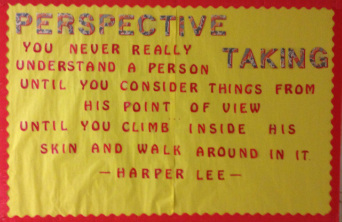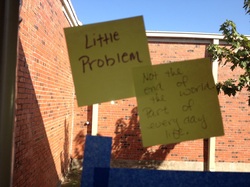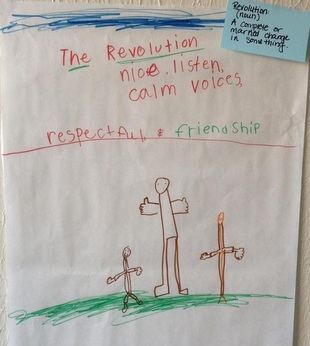
Perspective Taking is the skill of being able to look at things from another persons point of view. This can be essential when teaching how to be a good friend and conflict resolution. Really, perspective taking is essential to all aspects of life, from being patient in the lunch line to helping out around the house.
I got the basis for this lesson from the website of a fantastic teacher out of Austin ISD. If you like to read a little more about her lessons and classroom, check her out at http://acardenas.weebly.com/.
Perspective Taking Lesson - Week of October 22, 2012
Opening:
Line up various shoes, ranging from a baby shoe to a high heel to a man’s shoe. Ask questions about what they can tell about each of the people who might wear each. Talk about who the person is, where they might be going, what they might like to do, etc. Ask what kinds of thoughts and feelings each might have.
Discussion:
Talk about the idiom, “Put yourself in someone else’s shoes.” First, talk about it literally - we can't literally put ourselves in certain shoes because they won't fit or we wouldn't choose to wear them because we are all so different. Then, talk about the metaphorical meaning. You CAN put yourself in another person’s shoes by trying to imagine what they might be going through in their life and how those things might be impacting them.
Activity:
After discussing what perspective taking means using the visual attached below, I show them various pictures and ask inference/perspective taking questions. Use the “How Do You Feel?” wall to discuss what some of those students might be thinking or feeling. Write some things that might be happening with each person on the wipe off thought bubble by the picture.
I got the basis for this lesson from the website of a fantastic teacher out of Austin ISD. If you like to read a little more about her lessons and classroom, check her out at http://acardenas.weebly.com/.
Perspective Taking Lesson - Week of October 22, 2012
Opening:
Line up various shoes, ranging from a baby shoe to a high heel to a man’s shoe. Ask questions about what they can tell about each of the people who might wear each. Talk about who the person is, where they might be going, what they might like to do, etc. Ask what kinds of thoughts and feelings each might have.
Discussion:
Talk about the idiom, “Put yourself in someone else’s shoes.” First, talk about it literally - we can't literally put ourselves in certain shoes because they won't fit or we wouldn't choose to wear them because we are all so different. Then, talk about the metaphorical meaning. You CAN put yourself in another person’s shoes by trying to imagine what they might be going through in their life and how those things might be impacting them.
Activity:
After discussing what perspective taking means using the visual attached below, I show them various pictures and ask inference/perspective taking questions. Use the “How Do You Feel?” wall to discuss what some of those students might be thinking or feeling. Write some things that might be happening with each person on the wipe off thought bubble by the picture.


 RSS Feed
RSS Feed